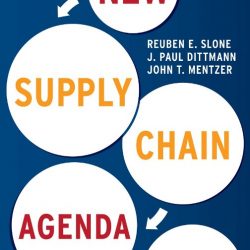The Ikea edge: supply chain vision of the CEO

Ikea is not a particularly open company. It is not publicly listed, and it has been known to refuse journalists and financial analysts admission to presentations, even at congresses that were open to the public. That alone is enough to make a book about Ikea by ex-boss Anders Dahlvig an interesting read. Dahlvig writes candidly about his principles in his ten years as CEO of Ikea, during which social responsibility played a very important role. He criticises the extravagant corporate bonuses that have become common in the USA and elsewhere; a bonus should be no more than the equivalent of three or four months’ salary, in his view.
Early outsourcing in the 1950s
A key part of this entertaining book covers the development of Ikea’s supply chain over the past decades, which has enabled the company to sell furniture at such reasonable prices. Ikea started sourcing products from Poland back in the 1950s. The conscious decision to run a relatively small range of products helped the company to keep its supply chain manageable. According to Dahlvig, Ikea’s secret lies in its control and coordination of the entire supply chain, from raw materials, manufacturing and product range to distribution through its stores; Ikea owns this vertically integrated supply chain. In the 1990s, a new purchasing strategy entailed relocating the manufacturing activities to the emerging low-wage countries predominantly in Asia, significantly reducing the number of suppliers, creating internal competition between purchasing teams in different countries and, in 1991, acquiring manufacturer Swedwood which had factories in Europe.
Dahlvig is quite open in his description of the various silos and the associated disconnections within Ikea’s supply chain around the turn of this century. The transformation of Ikea ’s supply chain from a functionally oriented into a process-oriented organisation was the biggest change in the company’s history, writes Dahlvig, and he regarded it as a sensible decision to take the time to do it properly (ten years in all): “Small steps of change are less risky than giant leaps.” Thanks to its extensive coverage of the supply chain, this book is a fascinating read for every CEO.
‘The Ikea edge. Building Global Growth and Social Good at the World’s Most Iconic Home Store’ (2012), by Anders Dahlvig. Published by McGraw-Hill, 191 pages, € 25.99










